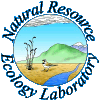
Biocomplexity, Spatial Scale, and Fragmentation: Implications for Arid and Semi-arid Ecosystems (SCALE)

Vryburg
Livestock Farms, Northwest Province,
South Africa
The western region of the North West Province is located in the southern part of the Kalahari Savanna. It is bordered to the north by the Molopo River, to the south and southeast by the brushlands of the Northern Cape and Free State Provinces. Savannas characterize the western region while more mesic grasslands dominate the eastern region of the province. Surface water is restricted to a few perennial rivers, seasonal pans, and transitory streams. As is characteristic of savannas, winters are dry and warm but cold fronts and lower temperatures are occasionally present. Morning frost is common in the winter, however; daytime temperatures easily warm to above freezing. Almost all rainfall in the area occurs in the summer months. The resulting cloud cover generally keeps the summer temperatures pleasant for humans and livestock. Although clear dry spells can be experienced, in which temperatures can rise to above 45 degrees Celsius (Hudson 2002).
In this region the combination of low annual rainfall, flat topography, and high evaporation rates result in a shortage of surface water (Cowling et al. 1997). The region has a history of frequent drought conditions. The occurrence, length and intensity of drought are often unpredictable. This is important because droughts affect not only crop and livestock production but are also associated with decreased levels of employment, income, nutrition and health (Vogel 1995). Plant ecology can also be affected by drought conditions, as lack of water changes species composition and abundance (Meyers 1999, Kellerman et al. 1988). This can have a devastating effect on grazing lands. Under certain conditions, the combination of drought and overstocking provides conditions favorable to poisonous plants. Because of the lack of food, animals will eat the poisonous plants and overwhelming outbreaks of poisoning can occur (Hudson 2002).
Because
surface water is scarce in the North-West Province, almost all water
for human and livestock consumption is obtained via boreholes from the
abundance of underground water in the area. Groundwater is generally
present even in the most severe droughts. Water availability is occasionally
a problem when wind is insufficient to power windmills. Most commercial
and some communal farmers have back-up diesel power for these times.
Commercial farmers average eleven boreholes per farm for their livestock
use with an average use of 57 Tropical Livestock Units (TLUs) per borehole.
The typical communal farmer has (on average) two boreholes and an animal
usage of 25 TLUs per borehole.
Page Last Modified: October
13, 2006
Disclaimer
| Equal
Opportunity Statement
Webmaster: jlackett@nrel.colostate.edu
